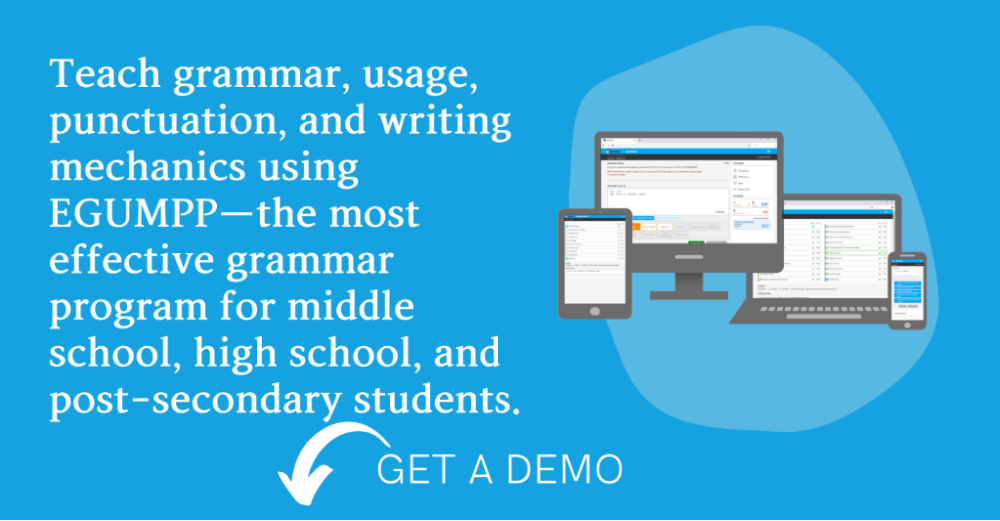Bring up the idea of a five-paragraph essay, and you’ll likely get moans and groans from parents and kids.
It’s so boring!
What do I write about?
How on earth do I teach this?
It causes frustration all around, but it’s not as hard as it seems. The skills and techniques your children hone while using the structure of an essay will serve them in their written communication throughout life.
So what exactly is a five-paragraph essay, and how do we help our homeschool child achieve proficiency?
 The Structure of the Five-Paragraph Essay
The Structure of the Five-Paragraph Essay
The structure of a five-paragraph essay is quite simple. You begin with an introductory paragraph, followed by three supporting paragraphs, and ending with a concluding paragraph.
There is an old adage to keep in mind when composing an essay: tell them what you’re going to say, say it, and tell them what you said. This idea works well when considering each component of an essay.
It sounds simple enough, yet it can cause such anxiety. So what is included in each section, and how should we coach our children through the process?
1 | Introduction (Tell them what you are going to say)
The introduction and the conclusion seem to be the hardest parts of an essay to write, but even within these sections, there are several things you need to include.
In the introduction, you need an opener that grabs the reader’s attention, a lead-in which gives a little more information, and finally, the thesis statement.
The Thesis Statement
The thesis statement is the reason an introduction exists. It’s the reason for the entire essay. Its job is to summarize the main point or claim of the essay and provide supporting information. Let’s compare two examples:
- Dogs make the best pets.
- Dogs make the best pets because they are loving, loyal, and smart.
Which is a proper thesis statement? Example one is simply an opinion. It doesn’t tell us why the author thinks dogs are the best pets. The thesis statement would be the second example because it tells you what the essay will include in its argument that dogs make the best pets.
The Opener and Lead-In
The opener and lead-in come before the thesis statement, but knowing the essay’s purpose will help your child craft a more engaging introduction.
The opener is the opportunity to hook your reader and make them want to continue reading. Tell a funny story, give an interesting fact, or ask a thought-provoking question to engage the interest of your reader.
After the opener, you should have 2-3 lead-in sentences that set the stage for the thesis statement.
2 | Supporting Paragraphs (Say It)
In the introduction, you told them what your essay would say, now you’re going to say it. Using our thesis statement about dogs, we know that each paragraph should focus on one claim we made to argue that dogs make the best pets.
- Dogs are loving.
- Dogs are loyal.
- Dogs are smart.
Each paragraph should contain information that supports the thesis statement. The supporting paragraphs provide the perfect opportunity to embrace the idea of showing through writing rather than telling.
Don’t just say dogs are loving, give an example of a dog’s undying love. Don’t tell me dogs are smart; illustrate it through statistics and exciting stories. It isn’t enough to say dogs are loyal, use words to create a visual portrait of a faithful companion.
Now that you have your supporting paragraphs ready, it’s time for the home stretch! The conclusion.
3 | Conclusion (Tell them what you said)
The conclusion is the time to put a bow on your essay. It’s important to restate your thesis, but change it up and make it enjoyable. For example, you could rewrite the thesis statement about dogs to read:
“If your looking for a loving, loyal, and smart companion, a dog is the perfect pet.”
Next, you have a lead-out that summarizes the main points of the supporting paragraphs.
Finally, you wrap it up with a concluding remark. In your concluding statement, you want to bring your reader full circle. Go back to the hook and see how to recall and satisfy the reader’s initial interest.
But wait, there’s more!
Fine Tune Your Essay
Getting the words and ideas from our head to the paper is undoubtedly the hardest part, but we aren’t to the finish line yet. Now it’s time to proofread and edit the essay so it can be its best.
When rereading your essay, there are a few essential things to consider:
- Capitalization
- Tense
- Spelling
- Punctuation
- Organization and flow
It’s often helpful to first edit yourself but then ask for a new set of eyes. As the writer, you know what you were trying to say, but sometimes a person reading for the first time might not find it as clear. It’s essential to ask for help and accept constructive criticism.
You Did It! A Complete Five-Paragraph Essay
Writing a five-paragraph essay isn’t as hard as it sounds, and it will only get easier with practice. Our job as homeschooling parents is to coach and support our children through the process until they are confident in their writing abilities.
It can be beneficial to walk them step by step through this process until they are crafting their own brilliant essays. The best bonus is you will no longer be reading boring papers.




